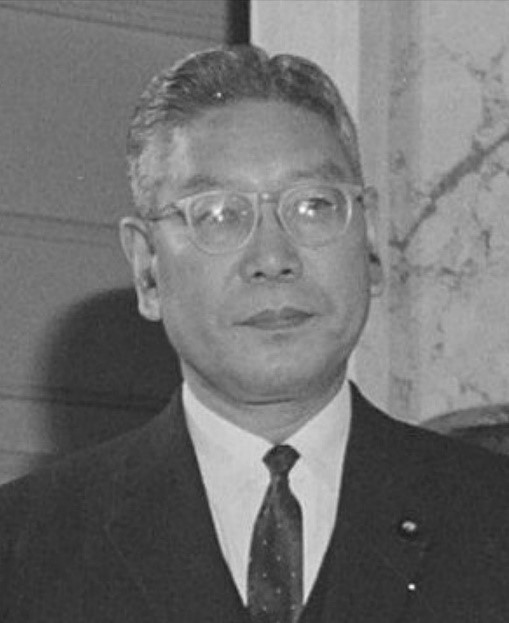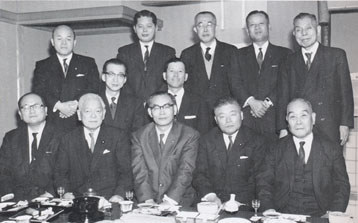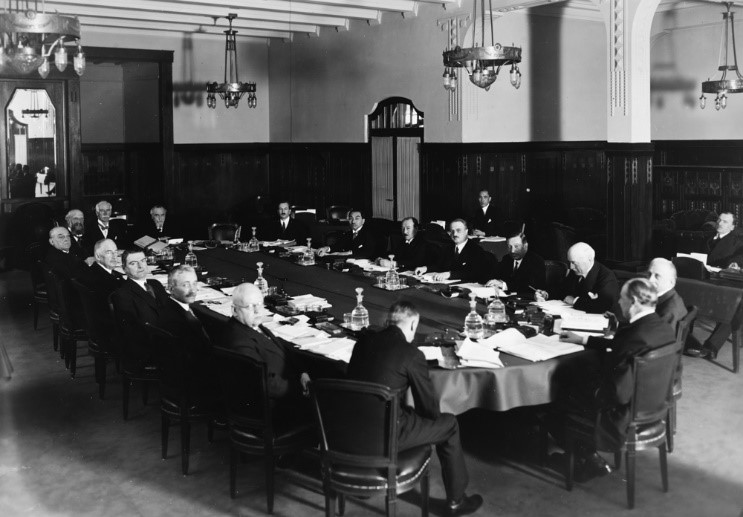Seeking the Future of the “Vision for Digital Garden City Nation” in Japan: A genealogical Analysis and Beyond

Prime Minister Kishida has set the “the Vision for a Digital Garden City Nation” as his signature policy. This vision is to be promoted with a budget of 120 billion yen (*1).
(Figure: Prime Minister Kishida visits a high school in Ehime Prefecture to observe ICT-enhanced classes)

(Source: THE GOVERNMENT OF JAPAN)
This initiative is aimed at solving the issues facing the region, such as population decline, aging, and industrial hollowing out, by harnessing the power of digital technology.
While this concept may seem cutting-edge, it can be traced back to the economic policies of successive LDP administrations, especially those of prime ministers from the Kochikai.
The Kochikai was formed by Hayato Ikeda and his surrounding Diet members and staff who came from the bureaucracy.
The Kochikai is following in the footsteps of Prime Minister Shigeru Yoshida, who was leading Japan’s postwar reconstructions, and while it considers itself conservative in its policies, it has liberal tendencies.
The birth of the Kishida administration was the first long-cherished wish of the Kochikai in 30 years, since Prime Minister Kiichi Miyazawa. And the roots of the Kishida’s vision can be traced back to the policies of Masayoshi Ohira and even Hayato Ikeda, the prime minister from the Kochikai.
(Figure: Prime Minister Hayato Ikeda)

(Source: Wikipedia)
We look back at the policies of Prime Ministers Ikeda and Ohira, which can be said to be the roots of Kishida’s vision.
Prime Minister Ikeda is known for his “Income Doubling Plan,” which set a goal of doubling the real gross national product (GNP) to 26 trillion yen in the 10 years starting in 1961, and the Japanese economy subsequently grew beyond the plan.
This plan was supported by the following three elements:
1) Economic Forecast by Osamu Shimomura
2) Research and backup by the Kochikai
3) Support by the business community
And Masayoshi Ohira supported Ikeda as Chief Cabinet Secretary. So what was Prime Minister Ohira’s policy, that is, the “National garden city initiative”?
Ohira established a research group that included cultural figures such as architect Kisho Kurokawa and stage director Keita Asari, and promoted the “National Garden city initiative” as the top priority of his administration, bringing rural spaciousness to the city and urban vitality to the countryside. Ikeda’s income-doubling plan had the element of industry, government, and academia, but Ohira added the element of “culture” to it.
Although this initiative was not realized due to Ohira’s sudden death, it is important to note that Ohira’s background led him to formulate this initiative.
Ohira was born in 1910 in Kagawa Prefecture, as the third son of a farmer. At the time, Ohira, who was from Kagawa Prefecture, had a great yearning to go to Tokyo to study. In 1933, Ohira entered Tokyo University of Commerce (now Hitotsubashi University) receiving a scholarship.
In 1935, after passing the Higher Examination for Public Administration, Ohira went to a foundation where he had received a scholarship and met Juichi Tsushima, the Vice Minister of Finance (*2).
(Figure: Juichi Tsushima (front line, second from left) and Ohira (front line, second from right))

(Source: THE MASAYOSHI OHIRA MEMORIAL FOUNDATION)
Tsushima, like Ohira, was from Kagawa Prefecture and was a graduate of the University of Tokyo and a member of the elite of the elite who entered the Ministry of Finance.
When he met Ohira, Tsushima suddenly said the following:
“I’m hiring here today. You may not take any other job.”
When Ohira responded, “I am from Tokyo University of Commerce, so I am not suited for the Ministry of Finance,” Tsushima replied as follows:
“No, that’s not true. The Ministry of Finance has always been the University of Tokyo, with the occasional Kyoto University student. Whenever I ask any of the clerks about something, they all give me the same answer. This is not good. We need different blood. You should come to the Ministry of Finance.”
In a letter to his hometown, Ohira wrote, “I was so happy that I went up to heaven.”
And Tsushima’s book “Mori Kengo-san no koto (All about Mr. Kengo Mori)” also shows that his foresight and resourcefulness originated with his senior colleague, Kengo Mori, a bureaucrat in the Ministry of Finance (*3).
According to the book, Kengo Mori was appointed as a government delegate to the Geneva Conference on World War I Reparations and led the establishment of the Bank for International Settlements (BIS).
(Figure: First BIS Board of Governors Meeting in Basel)

(Source: BIS)
At the Paris Peace Conference after World War I, Japan is known to have been ridiculed as a “silent partner” for speaking out on almost no issues other than those related to its own country, but behind the scenes, Japan led the creation of the BIS, an institution that is still a keystone of international finance today.
The key to the success of the “Digital Rural City State Concept,” which is an extension of these roots and human connections, may lie in returning to these origins.
(reference)
*1 https://www.japan.go.jp/kizuna/2022/01/vision_for_a_digital_garden_city_nation.html
*2 https://rnavi.ndl.go.jp/books/2009/04/000001625941.php
*3 https://ci.nii.ac.jp/ncid/BN1199068X
Hiroyasu HARADA
Manager (Senior Analyst), Global Intelligence Group (GIG)



